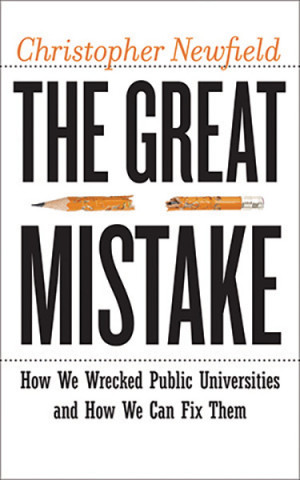Last week's UC news of $500 M in untapped administrative savings eclipsed the real story, which is that like CSU, UC's state funding remains destructively low.
I have updated the charts that continue to follow this story. I want to thank Maelen Haugen of UCSD and UCEAP Lyon for her particularly intelligent updating of our messy master spreadsheets. These 2 charts have minor errors (e.g. a Benchmark that doesn't dip in 2009) and will be replaced when I get back to my desk next week, but the overall picture is accurate.
The standard funding model for higher education ties funding to state General Fund (GF) availability. When we produced the first version of this chart in 2005, we sought to change the framework for thinking about higher ed funding. We did this by calculating a 2001 Benchmark, the turquoise line sloping up, which was tied not to the GF but to aggregate state personal income. The Benchmark rises at a rate tied to the amount of money Californians actually earn. The Benchmark reflects UC's General Fund share when it simply does as well as the state's income earners - no better, but also no worse.
The Futures Report and its heirs have discussed the other lines so I won't say much here - the green 1990 Pathway that is far over our heads, the orange Compact line which blocked recovery. There have been decision points along the way. The Senate officially recommended that the President ask the Regents to add $700 million to their budget request in 2007-08 as a way of getting back on the 2001 Pathway - growing with the state - while there was still time. This suggestion was not transmitted, seeming already to be a "non-starter" as one Regent's assistant told me at the time.
The price of our "realism" can be seen in the Schwarzenegger snarl of falling lines. Purple was our worst-case scenario in 2005 - a public funding freeze. The May Revise of 2009 put us below that in the current year. We then have the turquoise bounce that is being heralded as good news by UC officials, which it is only in the context of cuts to other agencies. Note that it leaves us well below the Compact line -- which the Governor unilaterally abrogated in 2008. It also remains close to the worst-case scenario of 2005, which incidentally envisioned filling the budget hole with fee increases to $20,000 a year, not the kind of deep, steady cuts in service that we are seeing this year and next.
When GF revenues are corrected for inflation, it is easier to see that we have ended the decade well below where we began it. Please note that we have not corrected for enrollment growth or for real cost increases tied to the Higher Education Price Index, but have used the lower Consumer Price Index for California. But this graph does give you a sense of why academic units all over the system are looking at 5% - 15% permanent cuts over this year and next, with no end in sight.
The core problem with the current funding model - which Michael referred to as the hybrid model - is that it is and long has been unable to sustain correct levels of public funding.
A related problem is that when adherents of this model now try to sustain public funding - as UCOP certainly now is -- they get tangled up in political compromises that reduce the likelihood of success. I will say more next week about why this is, but note in the meantime two corrosive compromises last week:
(1) the unlikely praise for Arnold Schwarzenegger's budgetary largesse to UC that suggests that the return of $305 million that he cut last year is a maximum rather than an only partial undoing of major damage.
(2) the administrative savings initiative, whose inflated $500 million estimate implied that UC is sitting on a half-billion of waste, meaning that our next half-billion of recovery money can come from us rather than from Sacramento.
Last week UC went backwards, not forwards. Next week I will offer more gruesome charts and outline better funding parameters.
Again - The State Needs a New Master Plan
15 hours ago






3 comments:
I have difficulty believing that the benchmark line really tracks California personal income. Was there no increase in unemployment in 2009? Did personal incomes really grow on that nice straight line? Or is this graph just a fantasy of how things "ought to be"?
Kevin--
I'm sure that Chris can give fuller explanations when he gets back but if you look again at the post he already indicated that there should have been a dip in 2009. It is the general picture I think he is trying to get across.
I see that Cal State's Chancellor Reed has taken on the governor in today's LAT op-ed, "It still doesn't add up." Why does UC express nothing but undying gratitude for the governor's pledge of $365.6 million additional funding? When will UC leadership be willing to say that the governor is not wearing any clothes? Should it come as no surprise, then, that the public blames UC for increasing the number of non-residents and directs their anger at us for the fact that Californians are getting the short end of the stick? As Chris has been saying for a very, very long time, the defunding of UC is as much a result of UCOP's missteps as the state's current political and economic crisis. And yet, as Michael indicates in the previous blog, Yudof et al. are looking for a way out by continuing down the same path that has led us here.
Join the Conversation
Note: Firefox is occasionally incompatible with our comments section. We apologize for the inconvenience.